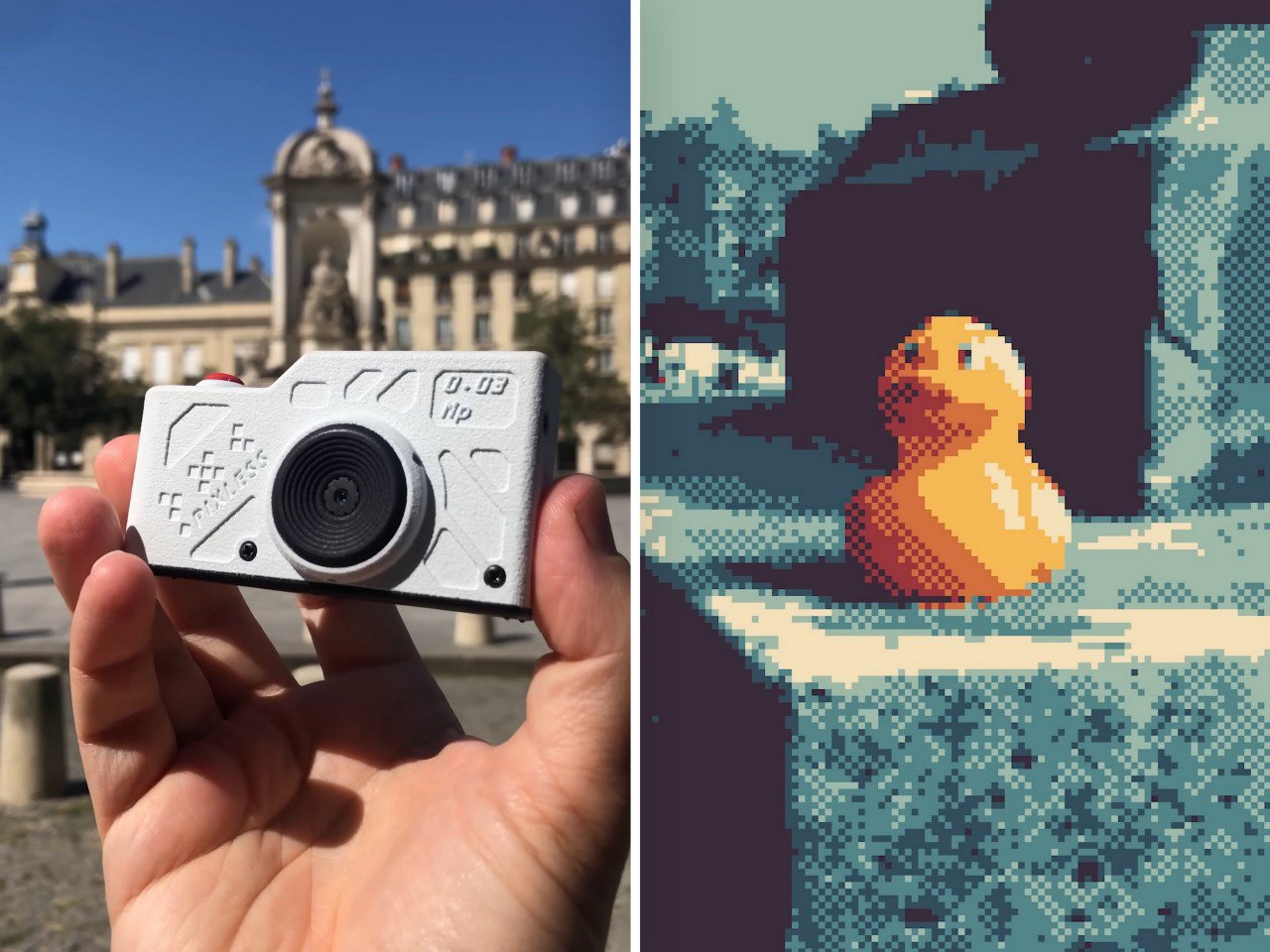We are absolutely drowning in pixels, yet we’ve completely forgotten how to see them. Every smartphone release is a chest-thumping contest about who can cram more megapixels onto a sensor the size of a fingernail, promising crystalline detail that mostly just ends up getting compressed into oblivion by social media algorithms anyway. It’s a race for technical perfection that has produced a landscape of beautiful, boring photos. So when something like Carlo Andreini’s Pixless camera comes along, sporting a defiant 0.03 megapixels, it feels less like a step backward and more like a necessary course correction. This camera is a beautiful, deliberate rejection of the idea that more is better, built on the simple premise that there’s a unique joy in seeing the world rendered in chunky, charming, 16-bit blocks of color.
The Pixless is not a new idea, but it is a perfect modern execution of an old one. Its spiritual ancestor is obviously the Nintendo Game Boy Camera, a quirky peripheral that let a generation of kids take grainy, 1-bit selfies. The Pixless takes that core concept of lo-fi digital imaging and brings it into the present. Instead of a clunky accessory for a handheld console, it’s a standalone, pocketable camera with a 3D-printed body, a modern USB-C port, and a microSD card slot. It’s built around an ESP32-S3 microcontroller and an OV5640 sensor, a piece of hardware perfectly capable of capturing five megapixels. The magic here is in the software, which purposefully throttles that sensor down to a mere 192 by 144 pixels to create its signature look.
Designer: Carlo Andreini
The magic of the Pixless lies in its intentionality, which is evident when you look under the hood. It runs on an ESP32-S3 microcontroller and uses an OV5640 sensor, a perfectly respectable piece of hardware that is natively capable of capturing five-megapixel images. However, the camera’s firmware deliberately throttles that sensor, forcing it to output at a minuscule 256 x 128 resolution. This is a critical distinction. The Pixless is not a cheap, low-quality camera producing bad images by accident; it is a thoughtfully designed creative tool using a capable sensor to produce a highly specific, stylized output. This software-driven downsampling is where the artistry happens, ensuring that every image is not just low-resolution, but is sculpted to fit a very particular retro-digital aesthetic that feels both nostalgic and refreshingly new.
Its most obvious spiritual ancestor is the Nintendo Game Boy Camera from 1998, a quirky peripheral that allowed a generation of kids to take grainy, 1-bit selfies and add silly stamps to them. The Pixless captures that same spirit of playful experimentation but evolves the concept for the modern era. It sheds the clunky Game Boy connection for a sleek, standalone 3D-printed body, and it shoots in color, which is a massive leap forward. It retains the core philosophy, the joy of creating images with severe limitations, but makes it more accessible and versatile. It is a modern successor that understands that the original’s charm was never about the hardware itself, but about the unique way it forced you to see the world through a pixelated lens, a feeling it masterfully recreates.
The real soul of this camera, however, is found in its selectable color palettes, and here’s where the Pixless gets cleverly modern. The camera itself has a hilariously tiny monochrome screen that shows you almost nothing useful for composition or color preview. Instead, the camera creates a Wi-Fi hotspot and serves a web interface that users access via a browser on their phone or computer. This interface allows live view, remote shutter, palette uploads, and settings adjustments. The choice not to build a dedicated app was deliberate, to ensure long-term compatibility. You can choose a palette that mimics the washed-out greens of a Game Boy screen for pure nostalgia, or switch to vibrant, high-contrast colors reminiscent of Sega Genesis graphics. This transforms photography from mere documentation into a form of digital painting, where you’re actively choosing the specific retro aesthetic that best fits your vision before you even press the shutter.
The app integration is thoughtfully designed to enhance creativity without overwhelming the experience. You get real-time preview of your shot with the selected palette applied, can review images immediately, and manage your microSD card storage, all while keeping the camera body itself refreshingly simple and distraction-free. This hybrid approach gives you the tactile satisfaction of using a dedicated camera device while providing the visual feedback and creative control that would be impossible on that tiny built-in screen. It’s a smart balance between old-school intentionality and modern convenience, letting you stay focused on composition and mood while having the tools you need to craft your pixel art vision.
The Pixless camera is a perfect example of creative constraint packaged in a beautiful little box. It proves that by stripping away the overwhelming technical options of modern cameras, you can actually unlock more creativity, not less. It is a tool that asks you to stop obsessing over sharpness and instead play with color, form, and composition in their most fundamental states. It is not trying to replace your iPhone or your mirrorless camera. Instead, it offers a completely different way of seeing, for anyone who finds as much beauty in the blocky landscapes of Super Mario World as they do in an Ansel Adams print. In a world chasing flawless representation, the Pixless offers something far more compelling: a charming, pixelated interpretation that reminds us why sometimes, less really is more.
The post Forget Megapixels, This Tiny Camera Turns Your World Into A 16-Bit Pixelated Video Game first appeared on Yanko Design.

